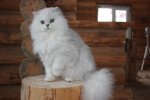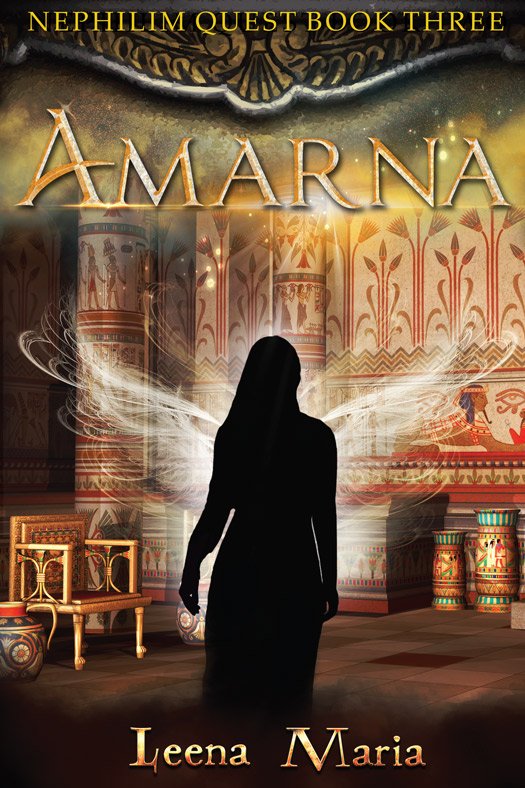House Plants Toxic to Cats
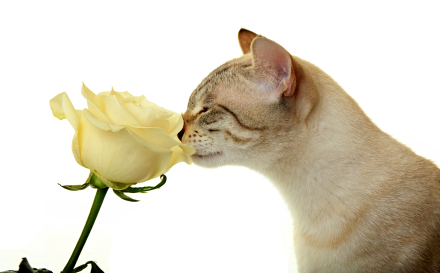
Are there house plants toxic to cats? When I began researching the subject I got very surprised how many toxic plants there were – and that some of these plants are downright deadly to your cat.
There are over 700 toxic plants to animals. In the US alone there are over 100,000 pet poisonings per year (the ones that are on the records), so we are talking of a severe issue here.
|
Take the beautiful lily for example – such an innocent looking plant, but so poisonous that if your cat even as much as brushes itself against the plant and gets its pollen to its fur and washes it off… Well, it may kill your cat. Lilies cause severe kidney failure in 36 hours time after ingestion. Easter lilies, tiger lilies… all lilies are fatal. |
And as
cats like to rub themselves against things to scent mark their territory, it is
never safe to have any kind of lily in the house. It really is number one in the list of house plants toxic to cats.
I am sure you have heard of poinsettias. They were once believed to be very poisonous to cats, but it seems they actually only cause mild gastric upset in your feline – it is the sap causing this, and it is considered to be a mild irritant.
|
It is a common misconception that cats would know instinctively to avoid poisonous plants. This is not true. If you have greenery in your home, the cats are more likely than not to take a bite just for the taste - they do not know what are the house plants toxic to cats. And especially if you have a kitten, you can be almost certain you will find it noshing on your plants – or playing with them which may also have serious consequences. Cats like grass so any plant resembling grass is considered to be grass by your cat. |
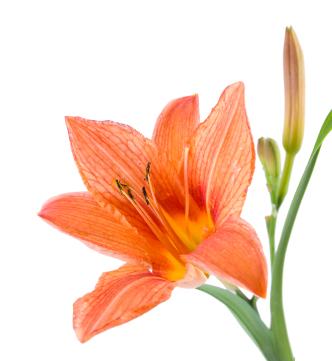 |
Many also
think that if a plant is safe for humans, it is safe for cats as well. This is
not so. Many of your favorite plants are on the list of house plants toxic to cats.
Luckily
many poisonous plants are often emetic, and so the cat vomits them quickly. In
some cases this is not enough and the plant has already caused severe and
permanent damage to your cat. Even if the plant makes your cat vomit, it
doesn’t learn a lesson but keeps on chewing the same, unhealthy plant.
And it is not only potted plants that are on the list of house plants toxic to cats. I have already made it clear to our friends that if they come to visit, they are not to bring any bouquets with them. Just like potted plants, bouquet flowers may have been sprayed with insecticides, fertilizers and fungicides (which are poisonous). Of course some people bring us bouquets nevertheless but I do not leave the vases alone for a moment – I carry the vase with me if I leave the room – or more often than not I place it in our bathroom and lock the door.
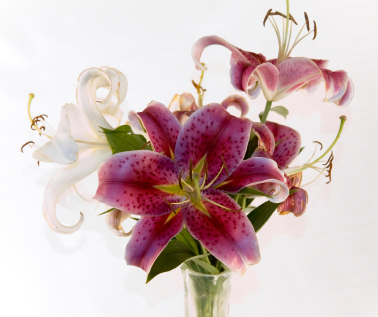
If you do get a new plant, wash it carefully so that any remains of the above mentioned chemicals are cleaned off. If possible, ask the plant seller which products have been used. And do remember that any chemicals added to the leaves may have been washed down to the soil in the pot when watering the plant. And as we all know, some cats like to dig into flower pots – and wash their paws later by licking them… Also the fertilizers you use may not be safe for your pet.
Do remember that even the water in the vase where the toxic plant has been can be poisonous to your cat – especially in the case of lilies. Also do not forget to wash your hands if you handle your plants – you might unknowingly poison your pet by petting them after you have been taking care of a plant that is on the list of house plants toxic to cats.
So it may be a good idea to decorate your home with silk of plastic plants. You can of course try to keep the plants in places where your cats cannot reach, but our couch tigers can be amazingly enterprising when it comes to reaching a little “side salad”…
How, then, do you keep your cat off your plants?
Noshing on your greenery may simply be a sign that the cat is bored.
So take care they have plenty of toys to amuse them. Very good toys are such where you hide a little piece of food and the cat has to fish it out. This may keep the cat busy for hours.
Also if the cat is scratching on your big plants, it may be lacking a proper scratching post.
It might be wise to use hanging pots whenever possible. Trim any hanging leaves so your cat cannot pull at them.
If your cats are persistent on eating your plants, you might try using double-sided tape. Not on your cats, of course, but on the floor around the plant. You probably guess why – the cats hate walking over it. However the tape collects dust and may leave marks on your floor, so would not use it permanently.
I have
heard some people using aluminum foil on the floor around the plants and say
this feels uncomfortable to a cat to walk over, but I have never tried this so
I am not sure. Also I am not very keen on having aluminum foil all over the floors...
If you believe or know you have house plants toxic to cats, I think the best thing to do is to go to a pet store and buy harmless, bitter tasting anti-chew sprays you can coat your plants with. Vinegar has also been used for this purpose, but it may harm the plants. Cats also dislike certain scents like citrus. People have been using citrus peels, Tabasco sauce and lemon water to protect their plants. You need to keep re-applying them and your cat may get used to them. Also lemon water may be toxic to your cat, even if it is unlikely the cat would lick it.
Also if you use chili water, your cat may get it in their paws and then burn their mouths while washing.
Some people use diluted spray perfume (1:100) – cats are not great fans of perfumes. But on the other hands, you may cause your cat allergies this way. (One of the worst causes for allergies in cats are scented cat litters).
Moth balls on the soil have been known to be effective in keeping the feline out of the house plants toxic to cats, but they may be toxic.
If your cat loves to dig the dirt (this may or may not be caused by how tidy the litter box is) and you are unhappy with using chemicals to keep your cat off the plants, there are other ways too. You can put a wire mesh over the soil (dense enough so that the cat does not hurt its paws), cut a thin gym mat to fit the pot or use commercial plant covers.
Weed fabric is also good (cut an X for your plant to fit through). Big stones can be used to cover the dirt (no pebbles – cats may choke on these).
Some people use water pistols or sprays: when the cat approaches the plant, they spray the cat wet. I used this method when we got our first Abyssinian and it was very effective – until we went to a cat show and the kitty in question freaked out when they disinfected the table with such a spray. So not a good option...
To keep your cats off house plants toxic to cats, get your cats their own safe grass. Lawn grass may not be good – it can be too sharp and may cause damage the internal organs and cut your cat’s mouth. Not forgetting those insecticides, of course. And have you considered the fact that with outside grass you may bring in parasites? Mites, ringworms, roundworms… So a proper washing of outside grass is in order, if you bring any to your cats.
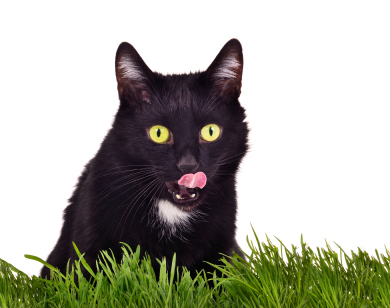
If your cat is used to eating house plants, it may take a while for it to get used to the grass. (Though more likely your cat will happily munch the new grass – our cats never had any problem in this respect). If this is the case, try mixing a bit of grass with your cat’s favorite food at first.
I usually give my cats wheat sprouts I can conveniently buy at our grocer’s.
I have tried cultivating grass myself, but after the cats found the half-grown grass plate a few times and I ended up vacuuming the dirt off our carpets, I gave up… But if you have more patience and a place to hide the half-grown grass, be sure to use sterilized soil and untreated grass seeds. Do not take soil from outdoor gardens.
Catnip and catmint are also safe, as should be sage, thyme and parsley, eaten in moderation. Oat-grass sprouts are also good.
Catnip, as we all know, causes your cat to go “mad” (some cats are affected more than others). Your cat will roll around, prance, purr and roll – and this is normal. Also catnip is not addictive to your cat. A friend of mine gives her two Russian Blues a handful of catnip every Friday evening. She sprinkles it on their living room carpet and after they have had their fun, she then vacuums the catnip off while doing her normal Friday cleaning routine of the home.
When cats
eat grass, it is normal for them to throw it up with some frothy bile (which
may also explain why they do not understand to stop eating a poisonous plant
when it causes them to throw up). If this behavior is not excessive, it is
normal. Just a part of life when you own a cat...
Cats eat greenery to get fiber. Grass helps with hairball indigestion (especially with long-haired cats - I believe this when I see what out Somali cat Rolli throws up after eating grass) and teeth irritation. Grass also contains folic acid, and cats may digest this instinctively as folic acid is an important vitamin involved in hemoglobin production.
Your Cat Ingested House Plants Toxic to Cats – What to Do?
Your cat is not feeling well. You see the telltale signs – a knocked over vase, vomit with plant parts in it, chewed leaves on a plant... You are sure or have a strong suspicion that your cat has eaten house plants toxic to cats.
Your cat may be in a shock – it has rapid heart beat, irregular pulse. Its tongue may be curled, its gums may be pale and its body temperature low.
If this is the case, keep your cat warm as low body temperature makes the shock even more severe. And then rush your cat to the vet.
But first – call your vet or poison control center – you do have the phone numbers in a place where you find them quickly, don’t you?
In USA you can call ASPCA: 1-888-426-4435 (24 h emergency hotline, there is a charge)
Only if your vet suggests it, induce vomiting. It may be that the sooner you get the house plants toxic to cats out of your cat’s stomach, the less the toxins have time to be absorbed into the body. But sometimes is not wise to induce vomiting, so remember to follow your vet’s advice.
You may need to prevent poison absorbtion of house plants toxic to cats with activated charcoal, sodium sulphate or milk of magnesia. Try milk, egg whites or vegetable oil if you do not have the above mentioned in your cupboard.
Activated charcoal binds toxins of house plants toxic to cats in the stomach and stops them from being absorbed into the bloodstream. BUT you still need to take your cat to the vets after using it.
Take with
you a sample of the plant your cat has eaten. You may also take a photo of the
plant with your cell phone or digital camera. You might even send the pic
immediately to your vet, even before you arrive, for instant identification.
Taking a sample of the vomit may help.
Be prepared to leave your cat at the vets for a few days so toxins can be flushed out of the cat’s body.
I have gathered a list of house plants toxic to cats HERE. (Do remember it is not all-inclusive and always consult your vet if you suspect a plant your cat has eaten may be poisonous.)
Back to Homepage from House plants toxic to cats
Back to Cat illnesses from House plants toxic to cats

Photographs on this page are copyrighted by
Do not copy - if you wish to have similar photo, purchase them - the price is very reasonable.
Space Witches series
The Seven Shabtis series
The Creature Wars series
Leena's Books
Tutankhamun
|
This book travels with the King Tut - Treasures of the Golden Pharaoh exhibition on his world tour of ten cities from March 2018 onwards |
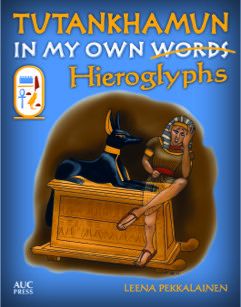 |
|
Tutankhamun: In My Own Hieroglyphs tells the story, for older children, of the life and afterlife of the famous young pharaoh in his own words. Tutankhamun tells us about the trouble he got into as a child in Akhenaten's palace in the new city of Akhetaten, and how he became a boy pharaoh. As we learn, his life changed a lot when he died as a teenager, and long years of boredom started in his tomb with only his pet monkey Fingers and his treasure for company. He did meet some of the Egyptian gods, of course, and had fun scaring off tomb robbers, but it was mostly rather dull. Then one day, some new and strange people, including a Mr. Howard Carter, arrived and began to take all the treasures out of his royal tomb. Fortunately, through the eyes of his beautiful golden mask, Tutankhamun, could have fun again traveling around the world |
Mr Mummific
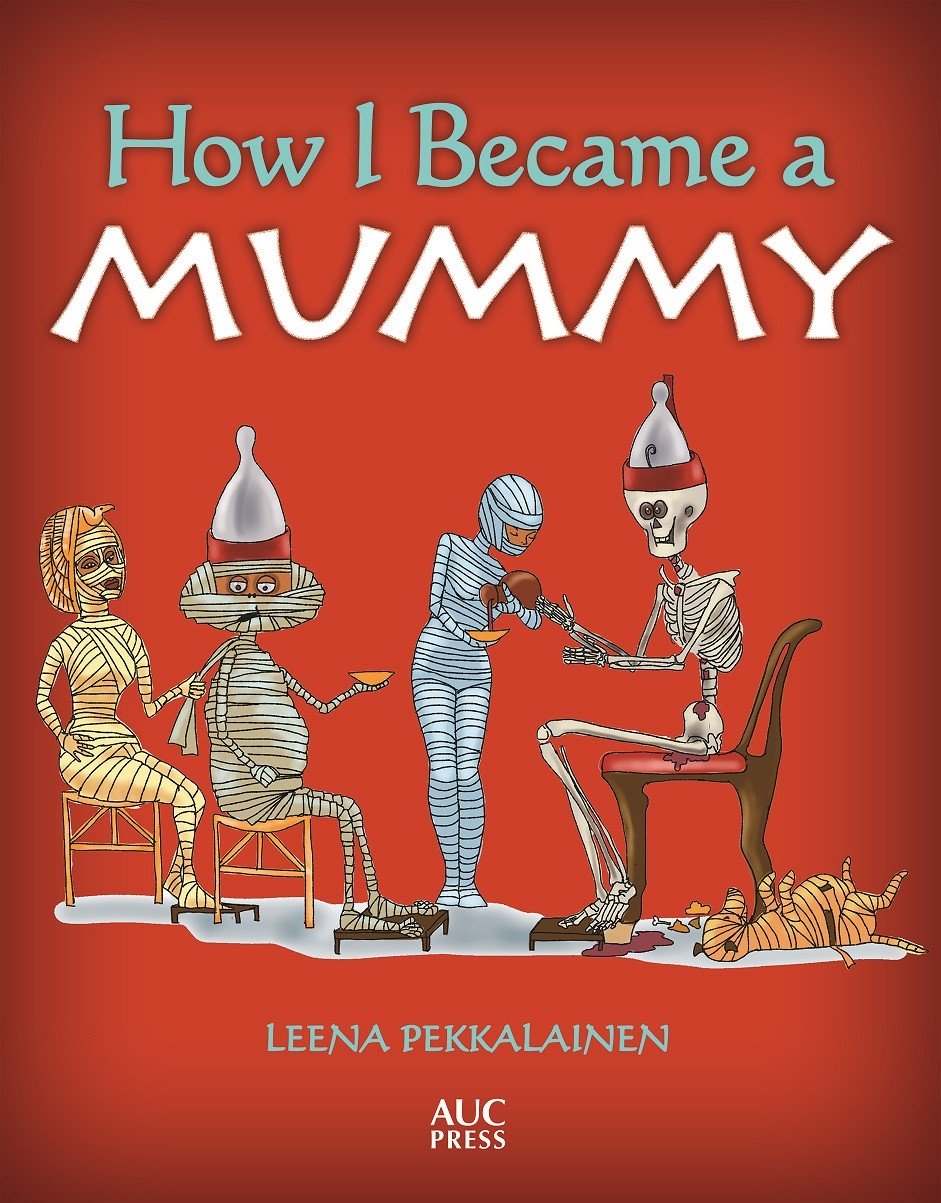
|
An ancient friend of mine, Mr Mummific dictated a book about how he became a mummy - and I was his scribe and artist. The book is available at Amazon.com and Amazon.co.uk On my other website www.ancientagypt101.com he continues his stories about life in ancient Egypt. |
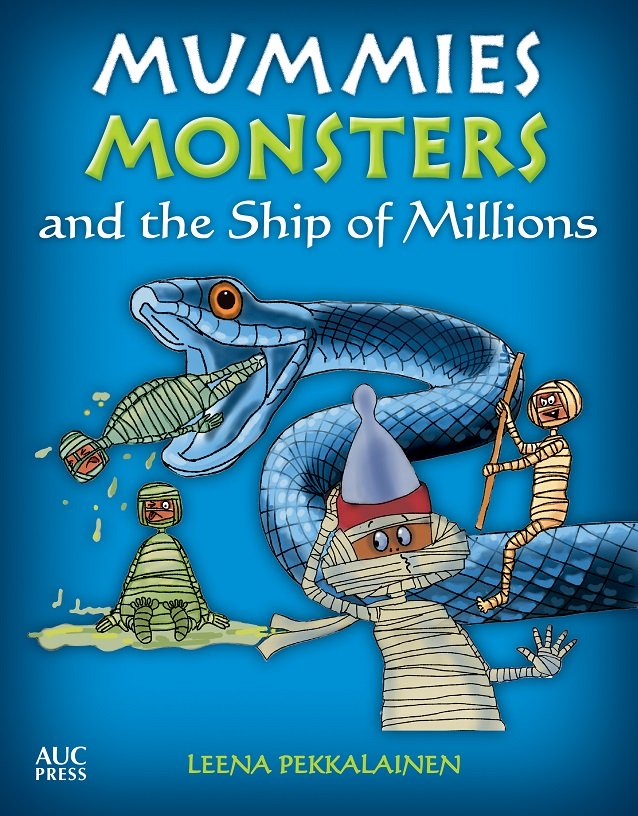
|
Another hilarious adventure for children with Mr Mummific, the mummy with attitude. He now tells the story of his mishaps, misunderstandings and misadventures as he leaves his tomb through the False Door to embark on the complicated and dangerous journey to the Afterlife aboard the magnificent Ship of Millions. Find the book at Amazon.com and Amazon.co.uk |
The Nephilim Quest Series
The first book in an epic fantasy series based on human mythology. The search for the mythical Watchers, the angels who fathered the Nephilim, the half-angels. A story that moves on three levels - our times, ancient Greece and ancient Egypt.
Preview Nephlim Quest 1: Shadowhunter online
***
My Author Website at leenasbooks.com
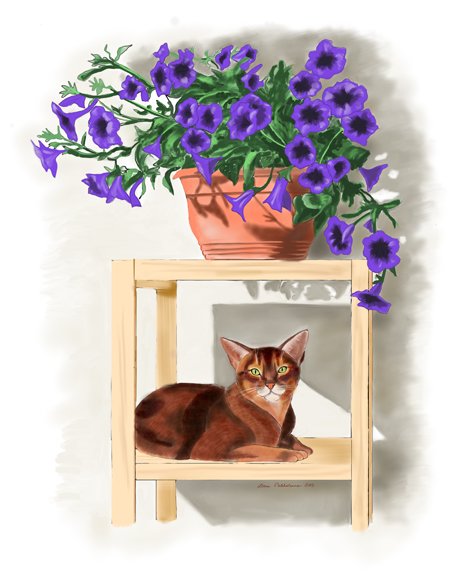
If you are looking for demanding coloring, check:
Online Coloring Books Magazine - No.1
It shows you step by step how to color this pretty Abyssinian cat with flowers. Each page has a color sample, and all the techniques are explained.



